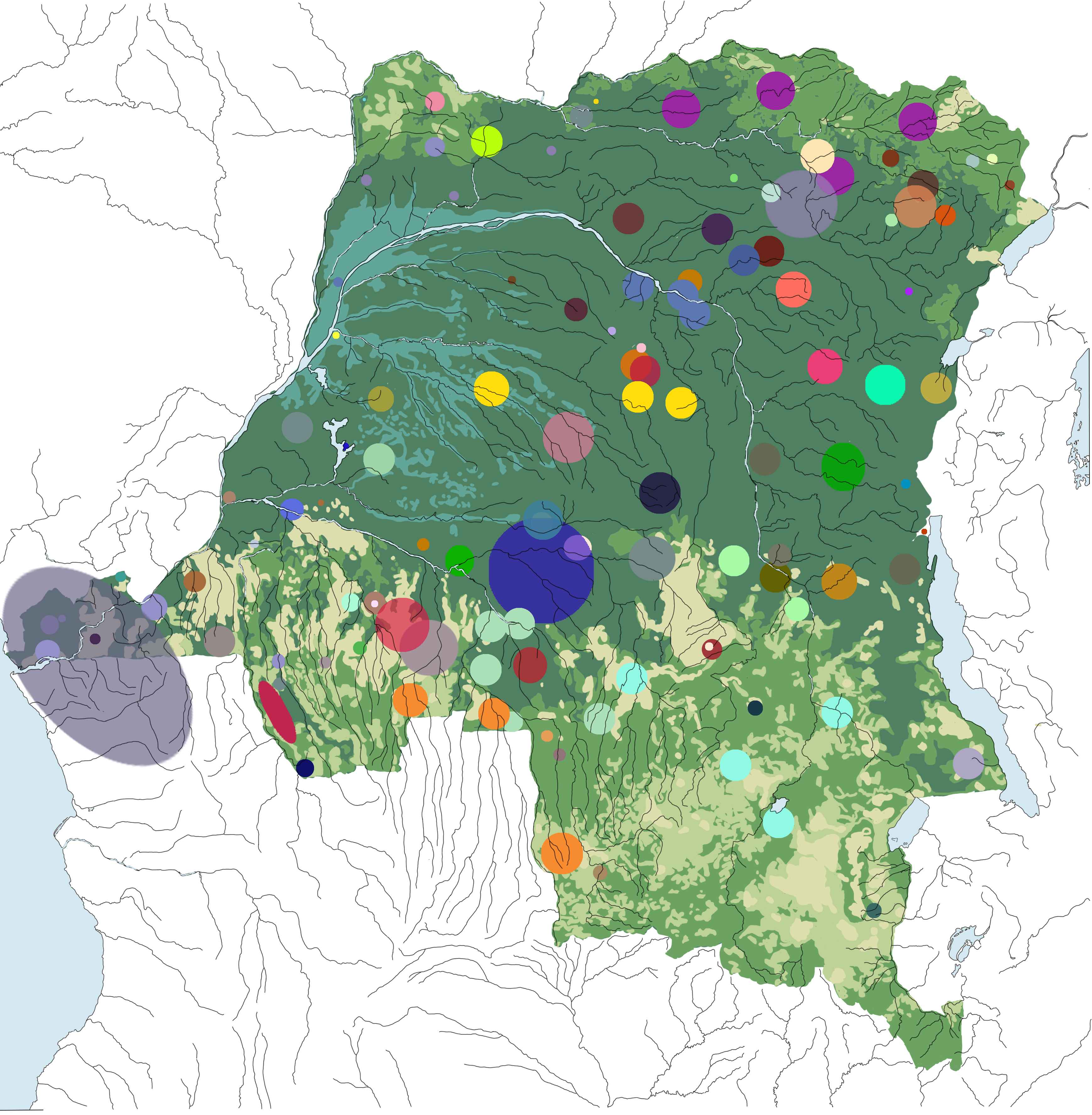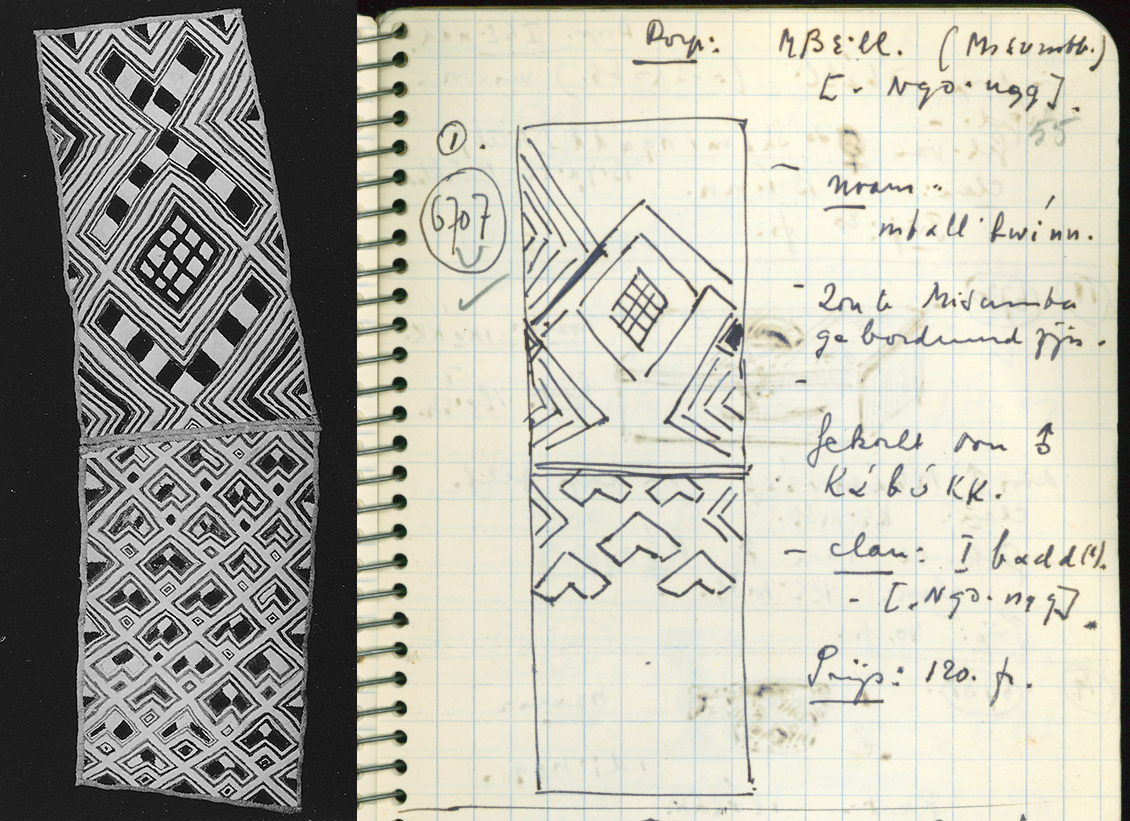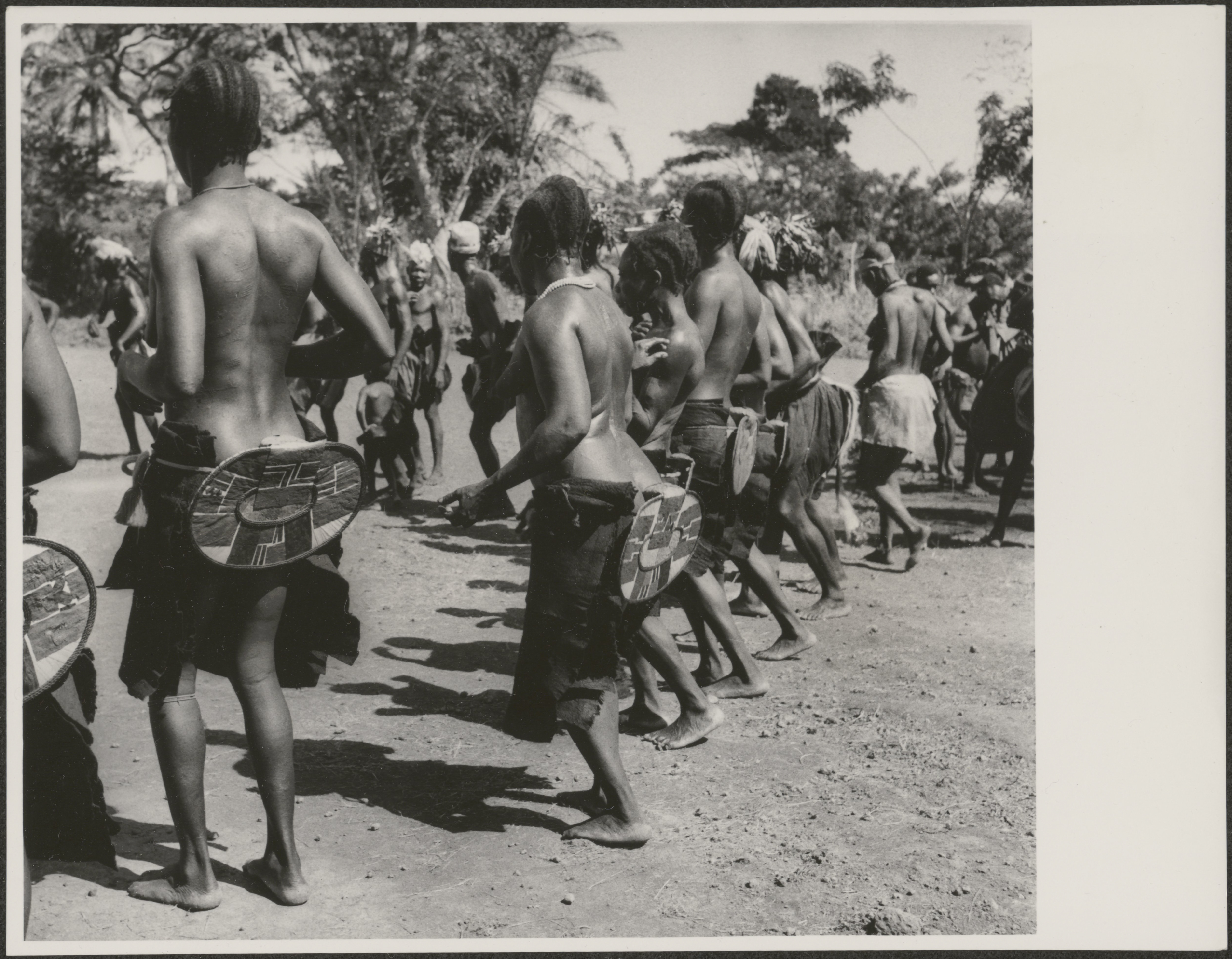A closer look into the textile collection of the RMCA

The RMCA houses a versatile textile collection with approximately 5000 textile objects made from plant fibers. This includes costumes, bags, loincloths, large flat textiles e.g. mats, etc. which originated from Congo and neighboring countries. This collection has been undervalued for a long time and little to no research has been conducted on this part of the collection. Nowadays this collection is rather inaccessible as well physically as digitally. The way that the textiles are stored are not optimal and makes the textiles not easy to access i.e., to many textiles are stacked on top of each other. Furthermore, however every object has a physical inventory number there are not always easy to find when you are looking for an object. Digitally, the collection is not easily accessible; in the database system, TMS, basic information is not rare missing e.g., photographs, dimensions, materials, descriptions, …
The CAPTex research project, which stands for “Towards a better appreciation of Central African Textile Masterpieces: understanding the craftwork and Preserving the collection of Textiles” aims to bring the collection in the spotlight and to make them more accessible. As well as the structures, techniques, materials, and degradation of the textiles are being analyzed in this project.
The four objectives of the research are: (1) creation of a reference database of microscopic images of known plant fibers used in African textiles, (2) the mapping/identification the structures, the materials, the damages, and the deterioration catalysators of the textiles of the collection of the Royal Museum for Central Africa, (3) propose a best practice for conserving the collection, and (4) creating a network. We aims to involve researchers, specialists, and textile manufacturers specializing in Congolese textiles into the project. Congo has a rich textile tradition that is still practiced by many artisans and studied by Congolese experts. We trying to involve Congolese textile makers and experts; and from the diaspora in the research, as they have a better knowledge of the materials and techniques that were and still are used, while we, as conservators, can advise on the best conservation and management of textiles. This website elaborate the work activities during the project by a blog.
Since this is a two-year project, the first step is to select textiles that will be examined, because we cannot examine all objects in that timeframe. The aim is to make a representative selection using the following parameters: which textiles are studied before, from which type of textiles or from region do we have enough to have adequate material to examine, …. To make a good selection the available information in TMS is analyzed e.g., provenance history, collector, region, researched objects, type of objects, materials, …
Focus of the project
The first step for selecting the textiles, is to create an overview is made of the provenance of the textiles. The map in figure 1 shows the different regions where the Congolese textiles are originated from. The provenance of this collection are 137 different cultures. From 44% of the object is the origin according to TMS, our database, unknown. Archival research and consultation of the acquisition files can give us hopefully more information about the provenance history of these objects.

We have a versatile textile collection, from flat textiles to garments, to bags, loincloths and negbwe’s (negbwe’s are a kind of textiles that is worn over the buttocks, see the last figure). The table below shows the largest groups of the different types of textiles. A lot of the textiles are described as “tissue” in the database system. This first group of textiles is classified under the denominator flat textiles, the largest group in the textile collection. This term is meaningless and hopefully, this kind of textiles can be further divided under a more specific term e.g. pagnes, mats, velours du Kasaï… We also have 152 objects where it is unknown what sort of textile it is according to the database. Since a lot of textiles have no existing photograph and the description of the textiles in TMS and the acquisition files is often not present or superficial. The only way to discover the textiles is to physically examine the objects.
562 Velours du Kasaï
496 Pagne
391 Negbwe
207 Garment
152 Unknown
142 Bag
102 Loincloth
46 Belt
26 Accessories
The second largest group are the famous velours du Kasai. The origin of this type of textiles is, as the name suggest, from the Kasaï province and there are made by the Kuba. This type of textiles is made with plant fibers that are being woven into a flat textile where geometric figures are embroidered on. Kuba textiles has already been studied extensively before.
Underneath you see an example of a “velours du Kasai” collected by Albert Maesen (1915-1991). He had a PhD in Art history, and he did scientific research between 1953 and 1955 in Belgian-Kongo. During that time, he collected objects and he described every objects in his field notebooks. Now, his field notebooks are an invaluable source for information about Congolese objects. During his scientific research, he collected 129 textiles that are now in the collection of the RMCA.

Another large group are garments, we even have several complete dance costumes that were used in initiation rituals. The most garment in the collection has their origin by the Pende, Chokwe, Kuba, Mangbetu, and Yaka. We chose to focus on the garments for this study, because there is not much knowledge about the materials, structures, and the techniques of this garments. In the literature and in the database of the museum are a lot of mistakes made for describing the costumes.
A first selection was made of 46 textiles to be examined. The aim was to receive a representative image of the collection, garments of different cultures and periods were chosen. The preference are textiles with descriptions found in the archive e.g., the field notebooks of Albert Alfons Maesen (1915 – 1992). Background research was conducted of the selected textiles of the RMCA by archival research (acquisition files, registers, and field notebooks) and consulting the database. The result is an excel database with all the found background information of the textiles. This information will be incorporated into the database of the museum (TMS).
In the framework of the project an intern, Sophie Gallant, is examining the negbwe’s of the collection for her thesis for the degree of Master in Conservation and restoration at the University of Antwerp. The negbwe’s in our collection are predominantly originated from Uele, a region in the Nord-east of Congo. She will examine the provenance of the objects, analyzing the techniques and materials, examining the deterioration catalysts and find out which the best methods will be to store them in our storage area.

The next step of the project is to set up a plant fiber database, in cooperation with the Botanical Garden Meise, that can be used to identify the used plant fibers in the textile collection. Most of the textile in the collection are created with plant fiber materials. There are also textiles made from hide and bark cloth (textile made of inner bark of a tree). This latter two will not be included in the research. This decision was made because now there is not much knowledge in the museum about what plant fibers there where used. Also, the dyes and pigments used for coloring the plant fibers will no t be included into the project concerning the limited time, but this would be an interesting follow-up research project. The plant fiber databank will be created by analyzing plant fibers from Central-Africa that houses into the collection of the Africamuseum and/or Meise Botanical Garden and from the fibers where we know which one it is. The next blogpost will be dedicated to this part of the project.